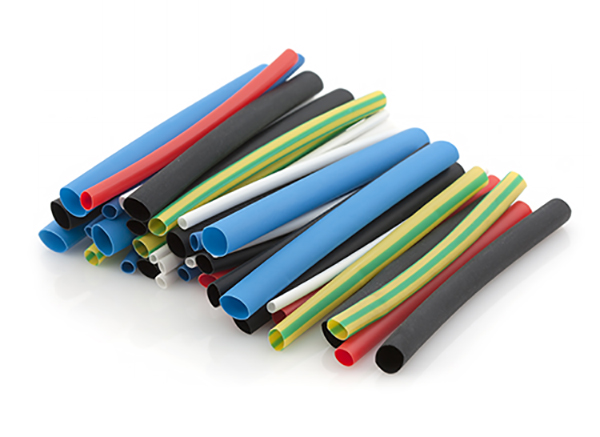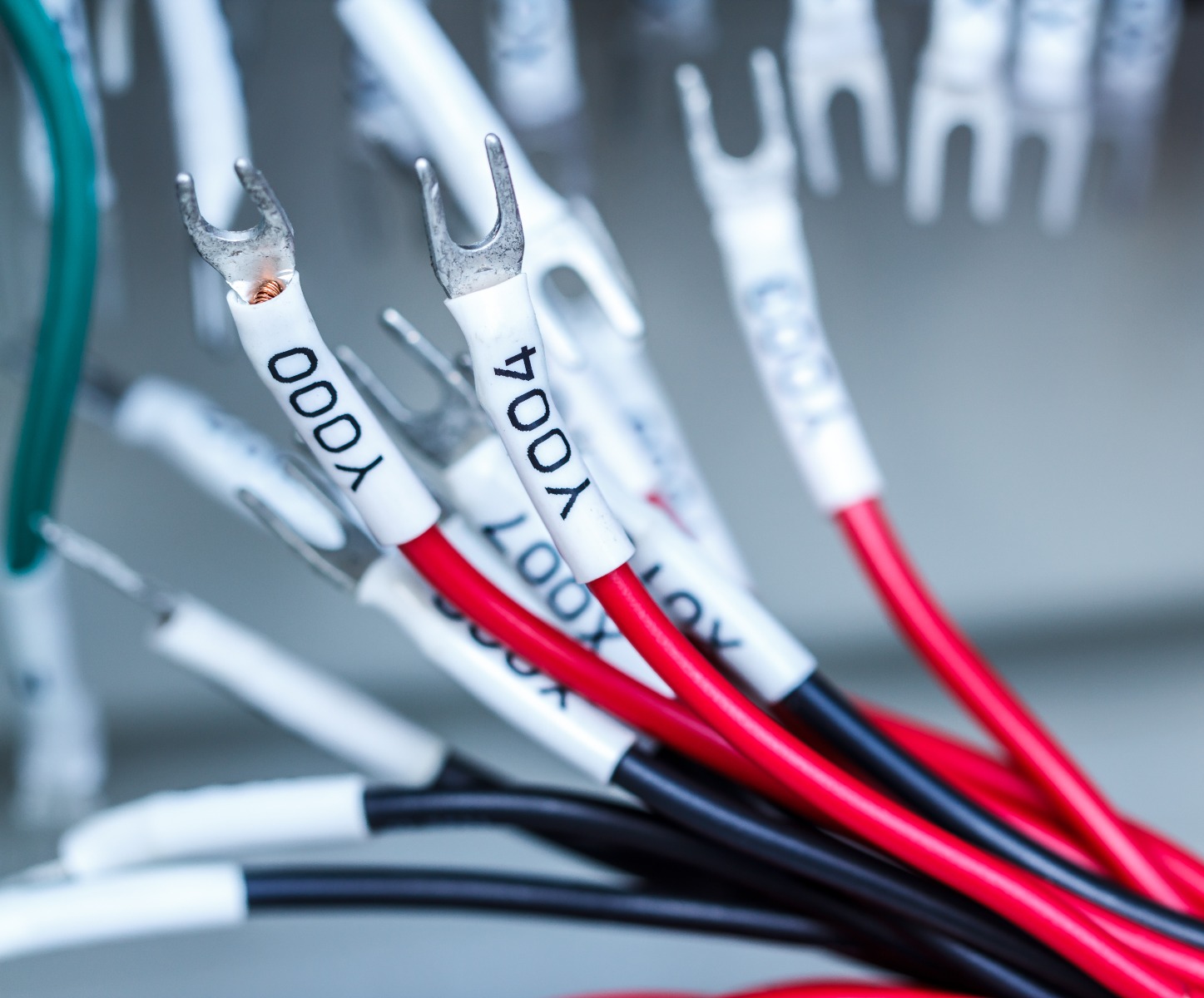Single Wall Tubing vs. Dual Wall Tubing
Heat Shrink Tubing
Heat shrink tubing can be found just about anywhere you use wire and cable to provide insulation, protection, bundling, environmental sealing, and strain relief. Both single wall and dual wall heat shrink tubing are used as an alternative to taping or molding your harnesses to insulate wire and cables and offer a lower cost and reduced operating time.
Both single wall and dual wall polyolefin heat shrink tubing are very similar in form, fit, and function, but you will want to pick the one that is best for your application and environment. How do you pick the right heat shrink tubing? It mainly comes down to what situation you would be using it in.
Before diving into the differences between single wall and dual wall tubing, let’s look at some of the reasons and situations that people use heat shrink tubing in the first place.

- Strain relief - for connectors and splices while providing flexibility
- Protection - against harsh environments such as heat, UV, fuel, and chemicals
- Sealing - keeps wire and cable from moisture, bacteria, mold and fuel
- Insulation - against extreme heat
- Identification - helps identify wires for easy identification and/or color-coding
- Cosmetic - organizes wires and overall appearance of the assembly
Dual wall shrink tubing works for all of those situations, but it can also be overkill. Let’s dig into the differences between single and dual wall heat shrink and when you would want to use them.
Why Would I Choose Single Wall Heat Shrink Tubing?
Single wall heat shrink tubing is a staple in the wire and cable industry and is available in a wide range of sizes, colors, and materials, making it an optimal choice to provide insulation, strain relief, and protection against mechanical damage and abrasion versus taping and molding in place. Because single wall heat shrink is flexible and fast-shrinking, it conforms to the size and shape of your underlying material. It’s also used for reducing noise, identifying wires, and organizing bundles in assembling cable harnesses.
The most common single wall heat shrink tubing is a polyolefin, which has a shrink temperature of 100°C (212°F) and can withstand temperatures up to 125°C-135°C (257°-275°). This general-purpose heat shrink tubing is UL recognized, CSA, and Mil-Spec AMS-DTL-23053/5. The most common shrink ratio for polyolefin heat shrink is 2:1, but 3:1, 4:1, and more is available depending on your needs.
Why Would I Choose Dual Wall Heat Shrink Tubing?
Dual wall heat shrink tubing is used when you need an extra layer of protection against moisture. If you need extra sealing to prevent water, chemical, and fluids from eroding your connections, dual wall tubing should be your choice.
Also known as adhesive lined tubing, dual wall tubing is made up of two different layers, the outer layer is polyolefin heat shrink and the inside layer is made up of an adhesive that will melt and flow when heated and can bond with many different types of materials, completely encapsulating the wire or cable components that you are working with to create a moisture-resistant seal. This provides better results for the user during assembly and can be applied quicker and easier than potting. After the adhesive has cooled down, it becomes an environmental seal protecting wire or cables from moisture and the environment.
Dual wall tubing is available in 2:1 heat shrink ratio, up to 6:1, and is also UL recognized, CSA, and Mil-Spec AMS-DTL-23053/5.

| Shrink Ratio | Operating Temperature | Minimum Full Recover Temperature | Color Options | Flammability Rating | Standard Size Range | Approvals/Mil-Spec | Applications | Products | |
|---|---|---|---|---|---|---|---|---|---|
|
Single Wall Heat Shrink Tubing |
2:1 and 3:1 |
-30°C to 125°C 55°C to 135°C |
90°C to 125°C |
Black, White, Red, Geen, Blue, Yellow, Brown, Orange, Violet, Grey |
ASTM D2671, Proc C; UL 224/CSA VW-1 |
3/4" to 5" |
UL recognized/CSA certified Meets AMS-DTL-23053 |
Shield splice protection, electrical insulation, mechanical protection for hoses, noise reduction for pipes, insulation and strain relief for fine gauge wire and fiber optic cables, moisture, fungus, and weather-resistant for outdoor applications, thermal insulation of substrates, pipes, hoses and cables |
RNF-100, Versafit, Sumitube B2 |
|
Dual Wall Heat Shrink Tubing
|
2:1 to 6:1 | -40°C to 130°C |
135°C |
Black, Red, Orange, Yellow |
Flame-retardant per ISO 6722 UL File E85381 |
1/8" to 4" |
UL recognized/CSA certified AMS-STD-23053 |
Sealing and protecting connector backshells, breakouts and connector-to-cable transitions, repair damaged cable jackets without removing connectors, environmental protection of electrical components, protect temperature-sensitive components and wires |
ATUM, Sumitube W3B2, Sumitube W3B2 (4X), DWP, ES-1000, ES-2000, TAT-125 |
So Which Style of Heat Shrink Tubing Is Best for Me?
Both single wall and dual wall polyolefin heat shrink tubing have the same form, fit, and function, but you will want to pick the one that is best for your application and environment. While they both provide strain relief, insulation, and identification for your wires, dual wall heat shrink tubing is ideal for that extra protection and seal that you may need based on the wire or cable’s environment.
Learn More
Want to learn more about the different types of heat shrink tubing and which is best for your application? Chat with us online or complete our contact form. You can also browse and filter the heat shrink tubing options to find the products that best fit your needs.
